Gary Anderson column: Go easy on Romain Grosjean
- Published
Romain Grosjean has taken a lot of stick after the Japanese Grand Prix for getting tangled up in yet another first-corner incident.
Suzuka was only the second race back since the Lotus driver served a one-race ban for causing a first-corner shunt in Belgium, and a lot of people were critical of him on Sunday, including Red Bull's Mark Webber, who was the innocent victim this time.
Yes, it was the eighth early-race incident in which Grosjean has been involved in 14 races. But I think we need to take a step back. Grosjean's wasn't the only incident on the first lap at Suzuka.
His team-mate Kimi Raikkonen took out Fernando Alonso's Ferrari by clipping his rear wheel.
I think there was so much pressure on Grosjean not to crash after his ban that he ended up crashing.
I'm not defending him, but it's very easy to jump on a driver's back in this situation.
Sometimes you can try too hard to avoid things. He's not free and relaxed.
If drivers are not in their normal "racing driver" state at the start of the race, they are in another mindset that they're not used to.
His team boss, Eric Boullier, clearly does need to have a word with him, but I've worked with drivers before who have got themselves into that state.
In that position I would be trying to calm him down, pull him back and say: "Just go and do your job and it'll be OK."
As far as I'm concerned, he's served his penalty for this one and that should be it.
Obviously, if it does keep happening, you've got to do something, but I suspect he just needs a solid result and it should come OK for him.
VETTEL LOOKING GOOD
Sebastian Vettel's dominant victory in Japan came after what appears to be a big step forward in performance from his Red Bull team in the last two races.
This focuses around a new front wing, which was introduced for the first time in Singapore, the race before Japan, where Vettel also won.
The front wing is arguably the key component in the design of a Formula 1 car.
Because it is at the front, it is what defines the airflow over the rest of the car.
The new wing and front airflow package on the Red Bull is about getting better airflow to the underfloor and if you can achieve that then you are making the whole car work better.
That is a fairly major step.
Beyond that, it also emerged in Japan that Red Bull were running their own version of a "double DRS" rear wing.
Mercedes pioneered this idea at the start of the season, with a system that uses the DRS overtaking aid on the rear wing to stall the front wing as well. I've explained why I think this is not a good idea previously.
Red Bull were one of the teams who initially objected most vociferously to the Mercedes "double DRS", but once it was declared legal they have gone away and come up with their own version.
They have gone down a very logical and simple route. When the DRS opens, it reveals a hole in the endplates through which air is directed into the lower beam wing.
It then comes out of a slot in the central section of the underside of the beam wing, where there is a 150mm width with which teams are free to do what they want.
That air reduces the performance of the beam wing. It will also "stall" the diffuser at a lot higher ride-height than normal, giving a further aerodynamic benefit.
It's a win-win situation.
In qualifying, you can run with more downforce on the car in the corners but still have good straight-line speed because the DRS takes the drag off the car on the straights.
Then in the race you have the extra grip and the lap times are faster. That's very important on a track like Suzuka, where downforce is very important through fast corners such as the Esses.
It will be an advantage at any track. It only works if you qualify at the front of the grid, however, because if you don't, overtaking would be difficult.
But there is no reason to think that won't happen in a Red Bull with Vettel in it when the car is half decent.
I said in my last column that Suzuka would be a defining race, in that whoever was quick there would be quick for the rest of the season. So I think Red Bull now have a package they can take anywhere and be competitive.
WORRYING TIMES FOR FERRARI
It was a disastrous race for Alonso.
The Ferrari was quicker than it looked to be through practice and qualifying and you have to say Alonso would have been on the podium if he had been in the race.
But, as they always say, "if" is F1 spelt backwards, and he lost 25 points to Vettel and is now only four points in front.
It is emergency time for Ferrari now - they have to do something to improve the car and, on the evidence of the last few races, you have to fear for Alonso.
Ferrari took a new rear wing to Singapore, which was not used there. There was a new Suzuka-spec rear wing for Japan, but that was also abandoned and they ended up using the wing they'd dropped in Singapore but with slight modifications.
Their percentage hit rate with developments is reasonably poor and there are only five races to go. So you would have to put your money on Vettel winning the title.
MCLAREN MYSTERY
One hope Alonso does have is of someone apart from him taking points off Vettel, and that should be McLaren.
But after a strong four races from Hungary to Singapore, they fell off the pace a bit in Japan.
They had a good package when they got to Japan, they looked strong on Friday, but it sort of slipped away from them, and they don't really know why.
On Friday, they had two different floors on the two cars and two different rear wing set-ups. Often, when you separate two cars like that and don't focus on one package, you end up doing half a job.
It's far better to get 95% out of an all right car than 80% out of a potentially faster car.
Then in the race, I can't help feeling they could have done more on strategy.
Sauber's Kamui Kobayashi came in for his final stop on lap 31 and fitted a new set of "hard" tyres. After that, while Jenson Button wasn't matching him for times on his older tyres, he wasn't that far away.
Button came in on lap 35 and fitted hard tyres himself, but if he'd waited a handful of laps longer and then put on the "soft" tyres - he still had a pretty good set of them available - there was a good chance he could have come at Kobayashi much harder, much more quickly.
Now, I don't think those tyres would have dropped off towards the end. But even if they had and Kobayashi had got past him again, Button was far enough ahead of Lewis Hamilton to stay in front, so he wasn't going to lose anything.
But instead of thinking outside the box and trying something different, McLaren went for a safe haven.
That's fine if you're leading, but from McLaren I don't see the thinking on your feet that you sometimes need when you're trying to make up ground.
Gary Anderson, BBC F1's technical analyst, is the former technical director of the Jordan, Stewart and Jaguar teams. He was talking to BBC Sport's Andrew Benson.
- Published7 October 2012
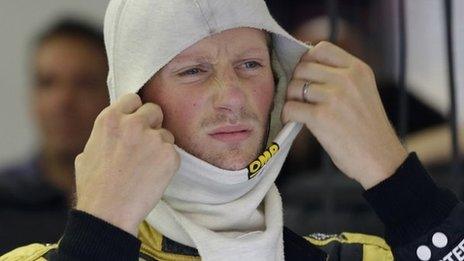
- Published7 October 2012
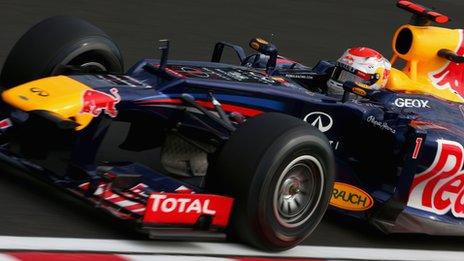
- Published7 October 2012
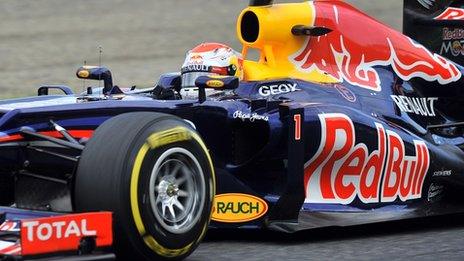
- Published7 October 2012
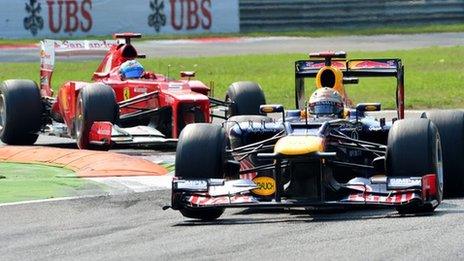
- Published7 October 2012
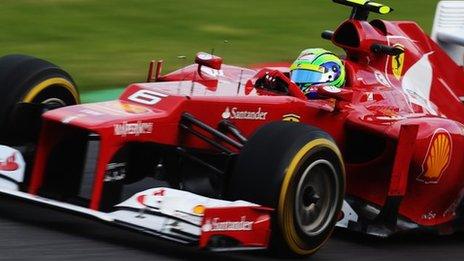
- Published6 October 2012
